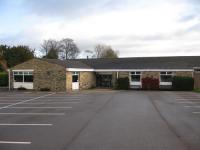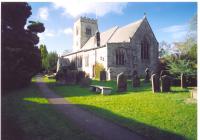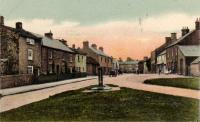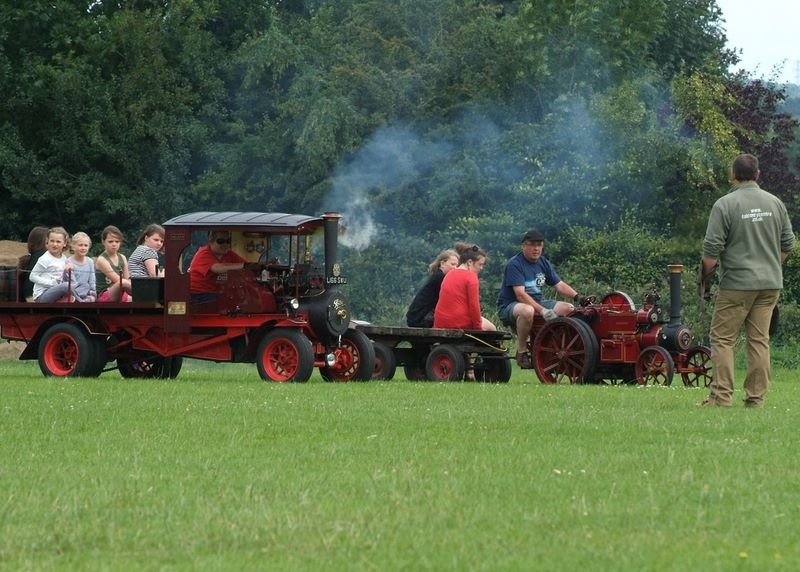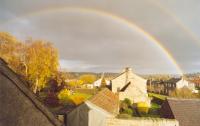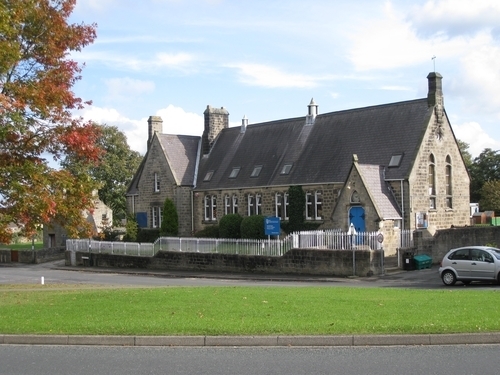Recent articles
© DT Online 2010 - 2024
| Ownership of properties on the West side of Church LaneDespite the existence of records at the West Riding Deeds Registry, it is difficult to trace the ownership of properties back beyond the 20th century. The use of plans was not common in earlier days and title deeds often describe properties by reference to their then occupants and the owners or occupants of adjacent plots. People living in the vicinity at the time such property was described in a deed may well have understood what was being described but later generations do not often have the necessary local knowledge to interpret the deeds. Hampsthwaite lies in what was the Forest of Knaresborough i.e. within the lands of the 'Forest' or 'Manor' of Knaresborough where land was subject to the legal procedures of a Manorial Court with a 'Lord' of the Manor (in this case the Duchy of Lancaster). Before the legal reforms of 1925 there were other forms of land tenure apart from freeholds and leaseholds and a common form of ownership was the 'Copyhold' - a system of registration of ownership by reference to the copies of the 'Rolls' of the manorial court. Land would be held 'of' the Lord of the Manor and subject to the 'manorial incidents' ie the rights of the Lord. Those rights could vary enormously and might include the requirement that the tenant provide certain services or goods in return for occupation of the land. Prior to the 20th century reforms the responsibilities of such tenants gradually became rationalised and reduced usually to the obligation to pay a 'fine' or fee to the Steward of the manorial court upon the transfer of land to a new tenant who would thereupon be 'admitted' (entered) upon the 'Roll' (records) of the Court. It was possible also to acquire from the Lord by purchase a title 'free' of those obligations - thus 'freehold'. This process was known as 'enfranchisement'. In 1867 an Indenture of Enfranchisement dated 17th December was executed between the Queen (ie the Duchy of Lancaster) and one Sarah Wilson together with another 24 assorted people (farmers, shoemakers, labourers, cowkeepers, etc.) and relating to land in Hampsthwaite, Felliscliffe and Thornthwaite,etc. This appears to have been a conversion of Sarah Wilson's title from customary copyhold to freehold and the 24 people were, presumably, her undertenants. On the 22nd May 1868 those people entered into a further indenture or deed by which they released to her (for payment, it is supposed) the remainder or reversion expectant upon Sarah's life estate in "the dwellinghouse and cottage near thereto with the coachhouse gardens orchard and croft ... belonging and situate at Hampsthwaite ... containing one acre and 13 perches and then in the possession of Sarah Wilson and George Webster". So far, this is the first identifiable transaction involving what was later called 'Bilton Garth' and is now known as 'Thimbleby House'. [The West Riding records do disclose an indenture "of Feoffment" dated 10th January 1807 between Joseph Wilson clerk and Bilton Josephus Wilson his son and relating to five dwellings with their stables, barns, etc., in Hampsthwaite. They also disclose a transaction on 6th May 1817 between John Dyneley and Bilton and relating to a dwellinghouse and barn in Hampsthwaite. None of the descriptions are clear enough to identify one of them as Bilton Garth. It seems, however, very likely that one of them was such]. It is clear that many of the properties on the west of Church Lane once formed part of the land belonging to Thimbleby House. The house was known as Bilton Garth at least as early as 1881. The name appears to reflect the fact that the property was occupied in 1861 by Bilton J. Wilson and his wife Sarah. By 1871 the property was occupied by the Vicar of Kirby Ravensworth Robert S. Close and it was his widow Maria whose executors conveyed the property on the 24th February 1899 to JOHN ASHBY (one of many medical practitioners to own or occupy the property). The description of the property in that conveyance mentions that the present occupant (presumably, as tenant) was Dr. Hislop and that earlier occupants had been Sarah Wilson and George Webster. Within a few months of acquiring the property John Ashby sold off a portion to GEORGE BRIGGS, a police constable, then living in one of the four buildings standing on the land he (Briggs) purchased. That building must have been 1 Thimbleby Cottages and the others 2 Thimbleby Cottages and Nutshell Cottages. The conveyance dated 4th August 1899 refers to the other residents as John Myers, Robert Newby and Sarah Dalby. The records do not reveal the price paid but it must have been a substantial sum for a police officer to pay. In fact, the records at the Deeds Registry show that this was not the first of Mr Briggs' property transactions - no less than 45 dealings are credited to his name between 1900 and 1920 alone and they relate to various properties throughout West Yorkshire. PC Briggs was, of course, the village policeman and other deeds refer to his home as once being owned (or, more likely, rented) by the West Riding Constabulary. As a man with substantial experience of property dealings he did not pass up on the opportunity to acquire his own home! Interestingly, the plan used on the conveyance to Briggs refers to the road as "Turnpike Road" - a subject for further research! On the 20th August 1907 Briggs purchased from Thomas and Wilfred Burton Middleton the piece of land lying on the North of the Parish Stable and between the churchyard and his own properties. It was described as having once been occupied by Sarah Reynard but then by William Holmes and William Henson. It was also said to have a dwelling and outbuildings on it but whatever buildings were there they must have been demolished rather quickly for the Ordnance Survey Map of 1907 does not show them. On the earlier Map of 1891 the Parish Stable (as seen in the photograph in the entry relating to Nutshell Cottages) is illustrated as having a further building or buildings joining its Northern wall. Was that further building the dwelling referred to in the Conveyance of 1907? When John Ashby died his home remained in the ownership of his widow JANE ELLEN ASHBY and when she died (17th February 1930) it passed to their son JOHN ASHBY who not only bore his father's name but was also a medical practitioner. On the 29th June 1934 John Ashby sold the property to GODFREY ULRIC AVERDIECK. Meanwhile, in 1931 Briggs had made his Will dated 18th September and by it he gave his whole estate to his two sons Edgar and Allan. He reserved a life annuity to his wife Sarah of £26 (!!!) and added the rather sad instruction that if his daughter May "whom I have not heard of for a number of years" should "make an appearance within five years of my death" then his executors were to "make a gift to her of £100 providing that she has been living a respectable life". George Briggs died 6th April 1934 Edgar Briggs died in 1939. On the 21st November 1949 Allan Briggs sold to Mr Averdieck the whole of the property which his father had purchased from John Ashby senior and Thomas and Wilfred Middleton i.e. what is now 1 & 2 Thimbleby Cottages and what was Nutshell Cottages now replaced by 'Longside'. [The small area of land to the North of the Parish Stable is owned by the church and further research is needed to establish if this has always been so or whether the plot was the site of the dwelling referred to in 1907 and, if so, how it came to be owned by the church]. Thus the size of Thimbleby House and its grounds expanded to and slightly exceeded its original proportions and so it remained for the next seventeen years until Averdieck sold it to GORDON NUTTALL BAILEY on the 5th November 1966. Mr Bailey was a consultant surgeon at Harrogate Hospital. This succession of medical practitioners as owners of the property (with the exception of Averdieck who was a textile merchant) suggests that an established medical practice was operating from the house throughout much of the 20th century.It is noteworthy that a Transfer of Mortgage of the property in 1913 had mentioned "a surgery" as being part of the buildings on the site. According to the census of 1901 the occupant was another general practioner Frederick H. Saunders. In 1965, shortly before the sale of the main house to Mr Bailey, a planning application was made by Mr Averdieck for the construction of what is now 'The Old Court' on the site of the tennis courts in the grounds of Thimbleby House. Outline permission was granted on the 1st July 1965 and a detailed application by architects Bolton & Crosby of Harrogate was approved on the 23rd September 1965. The new house was later sold. Mr Bailey himself obtained in 1975 permission for the demolition of the barn and outbuildings where 'Thimbleby Lodge' was later erected and that new property was also later sold. Ownership of properties on the West side of Church Lane Despite the existence of records at the West Riding Deeds Registry, it is difficult to trace the ownership of properties back beyond the 20th century. The use of plans was not common in earlier days and title deeds often describe properties by reference to their then occupants and the owners or occupants of adjacent plots. People living in the vicinity at the time such property was described in a deed may well have understood what was being described but later generations do not often have the necessary local knowledge to interpret the deeds. |




